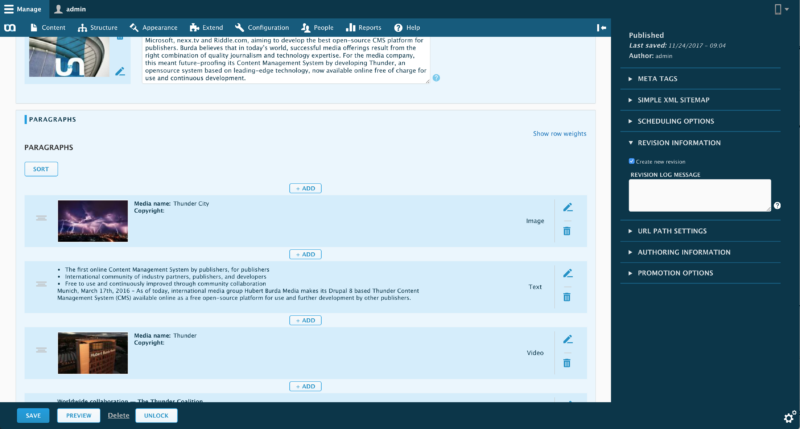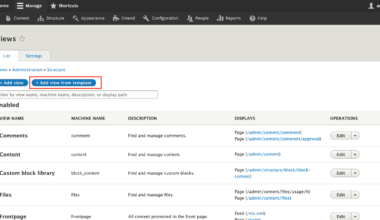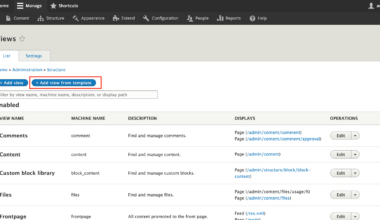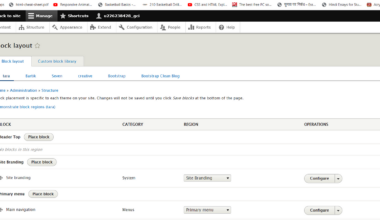Introduction to Drupal and Content Distribution
As a content management system (CMS), Drupal is an open-source platform that allows website owners to easily create, manage, and publish content on their sites. One of the key benefits of Drupal is its ability to support the distribution of content across multiple channels.
Content distribution refers to the process of sharing content on various platforms, including social media, email, and other websites. By distributing content, Drupal website owners can reach a wider audience and increase their visibility online.
Drupal offers a range of built-in features that support content distribution, including tools for integrating with social media platforms such as Twitter, Facebook, and LinkedIn. Additionally, Drupal supports the use of RSS feeds, which allow website visitors to subscribe to updates from a site’s blog or news section.
There are also a variety of strategies and tools available to help Drupal website owners effectively distribute their content. These include:
– Creating shareable content: By creating content that is engaging, informative, and visually appealing, website owners can increase the likelihood that their content will be shared on social media and other platforms.
– Targeting specific audiences: By identifying the audiences that are most likely to be interested in their content, website owners can tailor their distribution efforts to reach those individuals.
– Leveraging email marketing: By using email marketing tools to send newsletters and other updates to subscribers, website owners can keep their audience informed and engaged.
– Utilizing content syndication: By partnering with other websites to syndicate their content, website owners can increase their reach and visibility online.
Overall, content distribution is a critical aspect of any Drupal website’s success. By using the right strategies and tools, website owners can effectively distribute their content and reach a wider audience, ultimately driving more traffic and increasing engagement on their sites.
Benefits of Content Distribution for Drupal Websites
Effective content distribution can bring numerous benefits to a Drupal website. Here are some of the key advantages of content distribution:
1. Increased website traffic: By sharing content on various platforms, website owners can attract new visitors to their site. This can help increase their website traffic and improve their search engine rankings.
2. Improved engagement: By distributing valuable and relevant content, website owners can foster a sense of community and engagement with their audience. This can help them build a loyal following and establish themselves as thought leaders in their industry.
3. Greater brand awareness: By reaching a wider audience through content distribution, website owners can increase their brand recognition and visibility online. This can help them attract new customers and improve their overall reputation.
4. Increased lead generation: By targeting specific audiences with their content, website owners can attract leads that are more likely to convert into customers. This can help them improve their lead generation efforts and drive more sales.
5. Cost-effective marketing: Content distribution is a cost-effective way to market a Drupal website. By leveraging social media, email marketing, and other channels, website owners can reach a large audience without spending a lot of money on advertising.
Overall, effective content distribution can bring numerous benefits to a Drupal website. By using the right strategies and tools, website owners can increase their website traffic, engagement, and brand awareness, ultimately driving more business success.
Strategies for Effective Content Distribution
Creating high-quality content is only one part of the content distribution process. To ensure that your content reaches the right audience, it’s important to have a solid content distribution strategy in place. Here are some effective strategies for distributing your Drupal website’s content:
1. Plan your content distribution: To ensure that your content reaches your target audience, it’s important to plan out your distribution strategy in advance. This includes identifying the channels you’ll use, the types of content you’ll create, and the frequency of your distribution efforts.
2. Use social media: Social media platforms like Twitter, Facebook, and LinkedIn are great channels for distributing your content. By sharing your content on social media, you can reach a wider audience and encourage engagement with your brand.
3. Leverage email marketing: Email marketing is a highly effective way to distribute your content to your subscribers. By sending regular newsletters and updates, you can keep your audience engaged and informed about your latest content.
4. Utilize content syndication: Partnering with other websites to syndicate your content can help you reach a wider audience and improve your website’s visibility online. Look for websites in your industry that have a similar target audience to your own.
5. Optimize for search engines: Optimizing your content for search engines can help improve your website’s visibility in search results. This includes using keywords in your content, optimizing your meta descriptions, and building high-quality backlinks to your website.
6. Monitor your results: To ensure that your content distribution strategy is working effectively, it’s important to monitor your results. Use analytics tools to track your website traffic, engagement rates, and other key metrics. This will help you refine your strategy over time and improve your results.
By using these strategies, you can effectively distribute your Drupal website’s content and reach a wider audience. Remember to experiment with different channels and tactics to find the approach that works best for your business.
In addition to these strategies, there are also a variety of tools available to help you distribute your content more effectively. Let’s take a look at some of the most popular tools for content distribution in Drupal.
Tools for Content Distribution in Drupal
There are several tools available to help Drupal website owners effectively distribute their content. Here are some of the most popular tools for content distribution in Drupal:
1. Hootsuite: Hootsuite is a social media management tool that allows website owners to schedule and publish content to multiple social media channels at once. With Hootsuite, you can track your social media performance, engage with your audience, and monitor social media conversations related to your brand.
2. Buffer: Buffer is another social media management tool that allows you to schedule and publish content to multiple social media channels. Buffer also provides analytics to help you track your performance and improve your social media strategy.
3. Mailchimp: Mailchimp is an email marketing tool that allows website owners to send newsletters and other updates to their subscribers. With Mailchimp, you can create targeted email campaigns, automate your email marketing, and track your performance.
4. Feedburner: Feedburner is a Google tool that allows you to create RSS feeds for your website’s content. By creating an RSS feed, you can allow your website visitors to subscribe to your content updates and receive them in their preferred RSS reader.
5. Drupal SEO Tools: Drupal SEO Tools is a module that helps website owners optimize their content for search engines. With this module, you can analyze your website’s SEO performance, track your keywords, and generate XML sitemaps for your website.
6. Disqus: Disqus is a commenting system that allows website owners to manage their comments in one place. With Disqus, you can moderate comments, track engagement, and increase your website’s engagement.
7. ShareThis: ShareThis is a social media sharing tool that allows your website visitors to share your content on their social media channels. With ShareThis, you can customize your sharing buttons, track your sharing performance, and increase your website’s visibility on social media.
By using these tools, Drupal website owners can effectively distribute their content and reach a wider audience. Remember to experiment with different tools and tactics to find the approach that works best for your business.
In conclusion, content distribution is a critical aspect of any Drupal website’s success. By using the right strategies and tools, website owners can effectively distribute their content, reach a wider audience, and ultimately drive more traffic and engagement on their sites.
Final Thoughts on Drupal and Content Distribution
Effective content distribution is essential for Drupal website owners to succeed in today’s digital age. With the right strategies and tools, website owners can amplify their content and reach a wider audience. However, it’s important to remember that content distribution is not a one-time activity. It requires consistent effort and experimentation to find what works best for your business.
Here are some final thoughts on Drupal and content distribution:
1. Focus on quality over quantity: It’s better to have one piece of high-quality content that resonates with your audience than several pieces of mediocre content that don’t generate engagement. Make sure your content is informative, engaging, and valuable to your target audience.
2. Experiment with different channels: Don’t be afraid to try different content distribution channels to see what works best for your business. Test different social media platforms, email marketing tactics, and content syndication partnerships to find the approach that generates the most engagement.
3. Monitor your results: Use analytics tools to track your website traffic, engagement rates, and other key metrics to see how your content distribution strategy is performing. This will help you make data-driven decisions and refine your strategy over time.
4. Stay up-to-date with industry trends: The digital landscape is constantly evolving, so it’s important to stay up-to-date with the latest industry trends and best practices. Attend industry events, read industry publications, and network with other professionals to stay informed.
By following these tips and using the right strategies and tools, Drupal website owners can effectively distribute their content and reach a wider audience. Remember that content distribution is an ongoing process that requires consistent effort and experimentation. With patience and perseverance, you can achieve success in content distribution and drive more traffic and engagement on your Drupal website.






















